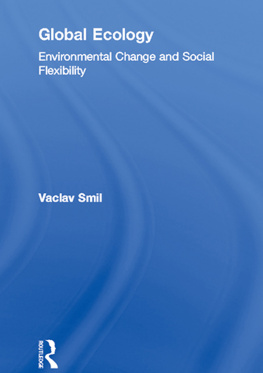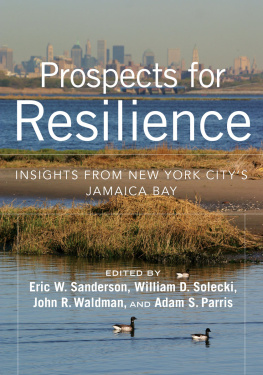To my mother Mary Lundy.
First published 1999 by Ashgate Publishing
Reissued 2018 by Routledge
2 Park Square, Milton Park, Abingdon, Oxon, OX14 4RN
711 Third Avenue, New York, NY 10017, USA
Routledge is an imprint of the Taylor & Francis Group, an informa business
Copyright Patricia Lundy 1999
All rights reserved. No part of this book may be reprinted or reproduced or utilised in any form or by any electronic, mechanical, or other means, now known or hereafter invented, including photocopying and recording, or in any information storage or retrieval system, without permission in writing from the publishers.
Notice:
Product or corporate names may be trademarks or registered trademarks, and are used only for identification and explanation without intent to infringe.
Publishers Note
The publisher has gone to great lengths to ensure the quality of this reprint but points out that some imperfections in the original copies may be apparent.
Disclaimer
The publisher has made every effort to trace copyright holders and welcomes correspondence from those they have been unable to contact.
A Library of Congress record exists under LC control number: 98074639
ISBN 13: 978-1-138-61370-6 (hbk)
ISBN 13: 978-0-429-46379-2 (ebk)
I would like to thank all of the people who have assisted me in carrying out this research in Jamaica. In particular, I would like to thank Phil Nissen and Elaine Rickards for their hospitality and friendship; and Selvin Masters for his sound advice and constructive criticisms. I would also like to acknowledge the help of Lorraine for her assistance in preparing the manuscript for publication. But most of all, I would like to thank my family and friends who have been a constant source of strength and support over the past, often difficult, few years. I would particularly like to thank Rosemary, Paul and Eimear who are always there for me.
A friend recently, jokingly, reminded me that I should take care when dedicating the book. She pointed out, many people have regretted their choice and would now dearly like to delete them. I am certain that this would never be the case with the person to whom I dedicate this book.
Jamaica is a former British colony which gained independence in 1962. The island is located in the Greater Antilles, approximately 90 miles south of Cuba, 100 miles west of Haiti and 600 miles south of Miami. It is the third largest island in the Caribbean. The population is estimated at 2.5 million, about 50 per cent of whom live in urban areas. Jamaica is ranked as a middle income Third World country. It is a small, dependent, capitalist economy based on agriculture, bauxite, tourism and light industry. A very large percentage of what Jamaica produces is exported rather than used locally, while a high proportion of what the society consumes is imported from abroad. During the 1970s the Government faced a severe economic situation, with an economy in recession, high unemployment, massive levels of emigration, capital flight, and growing external debt arrears. As a result of escalating economic decline, the international financial institutions imposed a shock treatment of structural adjustment measures in the mid-1980s. The consequences of these policies are the focus of this book.
Most Jamaicans are poor with an average GNP per head of approximately $1,200. The society is stratified along racial and class lines stemming from plantation slavery. The class structure is characterized by a high degree of maldistribution of wealth, as well as a high correlation between wealth and whiteness, near-whiteness, and minority ethnic characteristics. According to World Bank (1990) estimates, the top 20 per cent of the population account for more than 60 per cent of income.
The main political parties evolved from the trade union and independence movement of the 1930s and 1940s. The Peoples National Party (PNP) is a social democratic party founded by Norman Manley and the Jamaica Labour Party (JLP) is a conservative party founded by Alexander Bustamante, Manleys cousin. The parties have taken turns in power, and since independence each has been in government for two separate periods of two consecutive terms. Strong ideological differences emerged between the parties when in the 1970s, under the leadership of Michael Manley, the PNP adopted socialist and anti-imperialist policies and developed close ties with Cuba. Ideological differences between the two parties are less discernible today.
Nevertheless, partisan politics continue to be strong in Jamaica and violence has erupted between factions over the years. During the 1980 general election, organized violence between PNP and JLP groups resulted in an estimated eight hundred deaths. The introduction of firearms on a large scale meant that violence, particularly in the Kingston ghettos and shanty towns, escalated. The destruction which resulted from the violence is still obvious in the downtown Kingston area. This has resulted in the division of Kingston into geographical areas based on party loyalty. Within these areas, which are often no-go areas for the police, criminal gangs are strong and drug dealing and violence commonplace. In contrast, the image of Jamaica projected and marketed by the tourist industry is one of a carefree island paradise. As I will illustrate in the following chapters, the other side of paradise, and the reality of life for most Jamaicans, is, however, much different.
Structure of the study
This book is concerned with the social and environmental consequences of structural adjustment policies (SAPs) in Jamaica. Since their introduction, SAPs have provoked criticism and public debate. Jamaica is of particular interest because it was one of the first countries in which World Bank structural adjustment programmes were implemented, and in which loan conditionality was particularly harsh (LeFranc, 1994).
The book is based on data collected in Jamaica between 1991-1995. examines the character of the economic crisis in Jamaica, and the growth of international indebtedness. The chapter begins with a brief overview of the structural features of the Jamaican economy. This is followed by an outline of the emergence of the current economic crisis. The third section focuses on the role of the international financial institutions and explains the aims and the content of structural adjustment policies. The final part of the chapter examines the controversial issues surrounding adjustment packages. This chapter provides necessary background information for understanding the issues raised in the remainder of the book.
explores the direct and indirect effects of adjustment policies on health standards and health care provision in Jamaica. It begins with a review of the current literature and an examination of the opposing arguments on the topic to date, followed by an analysis of longitudinal data on health inputs and outputs during the period 1980-1996. This has proved to be the most popular way of analyzing the effects of structural adjustment on social welfare in many underdeveloped countries. However, fundamental questions about the methodology used for measuring the impact of structural adjustment are raised.
In I move on to discuss, further, the whole question of research methods. The justification for using qualitative methods in the present study, and the actual research findings, are examined. For the purpose of manageability, this part of the research was limited to aspects of Primary Health Care (PHC). The aim, of the qualitative research, was to analyze what health professionals were experiencing and what they perceived to be the effects of structural adjustment policies, if any, on health care provision. The contentious issue of conditionality and the legitimacy of such measures, as perceived by local people, is explored.







